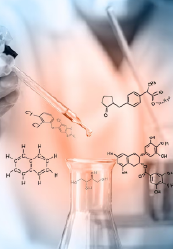Latest Emerging Technologies You Need to Know for Better Wastewater Treatment
With the rapid growth of the global population, the demand of water has also increased eventually. As earth pertains only 0.5% of drinkable water, it is crucial we use this natural resource judicially. Human has always outgrown sustain in comfort, and thus, Inventions of new ways for wastewater management have also been discovered.
Wastewater treatment equipment has been introduced in many countries, where it is incorporated municipally arising shares in the wastewater treatment market. Traditional systems have been replaced with the latest technologies. Awareness about these technologies can be useful in choosing suitable wastewater treatment for the residence.
According to research study, the global water and wastewater treatment equipment market size & share was valued at USD 53.15 billion in 2021 and is expected to reach USD 84.43 Billion by 2030, growing at a CAGR of 5.4% during the forecast period.
Following are latest technologies emerging:
- Thermal Hydrosis
Three things can be accomplished using this technique - wastewater treatment, waste byproduct reduction, and biogas production. Compared to traditional techniques, not only does it filter the water but use sludge for generating Biogas. This process is further divided into Thermal hydrolysis of biothelys (batch) and Thermal hydrolysis exelys differing by the factors of the plot area, costing, revenue stream, etc.
- Cells for Microbial Fuel
Another technology that does three things at once is microbial fuel cells (MFC), which use bacteria to clean wastewater. Even more notable is the fact that the bacteria consume wastewater sludge, resulting in the production of charged electrons that can be used to generate electricity.
- Solar Photo-Catalyst
This wastewater treatment equipment reduces 80% of the sludge amount. A microbial decomposition-oxidation process referred to as “Solar irradiation” comes into action. When combined with hydrogen peroxide, solar irradiation reduces the amount of carbon in the sludge. This is called the synergistic effect.
- Natural Treatment
Municipalities and state agencies around the world have adopted Natural wastewater treatment technologies. Examples of natural technology include soil filters on a wide scale, excavated wetlands with filtration systems, and sentiment ponds. Storm water is returned to nature much clearer, allowing particles and bacteria to settle & trap in a natural filter.
For More Research Insights, Request for a Sample PDF Report Here: https://www.polarismarketresearch.com/industry-analysis/water-and-wastewater-treatment-equipment-market/request-for-sample
Some of the Top Market Players Are:
Some of the major players operating in the global wastewater treatment equipment market include Ashland Technologies, Aquatech International LLC Technologies, Calgon Carbon Corp., Danaher Corporation, Degremont SAS, Dow Solutions, DuPont, Ecolab Inc, Evoqua, GE Technologies, Kemira OYJ, Pentair plc, SUEZ, Veolia, and Xylem Inc.
These new technologies provide many solutions which ease the burden on water bodies and help operators maintain safe, effective, efficient, and economical municipal wastewater treatment. Everybody should take a step towards protecting the environment and induce these technologies of wastewater management. An early step today can bring a sustainable future.
Water and Wastewater Treatment Equipment Market Report Scope
|
Report Attributes |
Details |
|
Market size value in 2021 |
USD 53.15 billion |
|
Revenue forecast in 2030 |
USD 84.43 billion |
|
CAGR |
5.4% from 2022 - 2030 |
|
Base year |
2021 |
|
Historical data |
2018 - 2020 |
|
Forecast period |
2022 - 2030 |
|
Quantitative units |
Revenue in USD billion and CAGR from 2022 to 2030 |
|
Segments covered |
By Type, By Process, By Application, By Region |
|
Regional scope |
North America, Europe, Asia Pacific, Latin America; Middle East & Africa |
|
Key companies |
Ashland Technologies, Aquatech International LLC Technologies, Calgon Carbon Corp., Danaher Corporation, Degremont SAS, Dow Solutions, DuPont, Ecolab Inc, Evoqua, GE Technologies, Kemira OYJ, Pentair plc, SUEZ, Veolia, Xylem Inc. |


